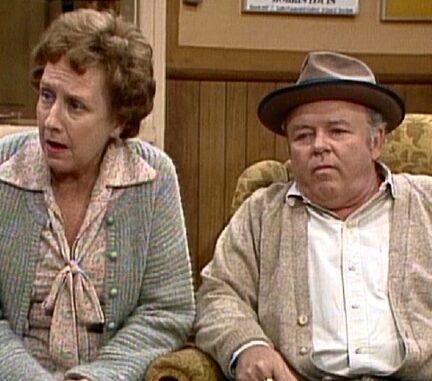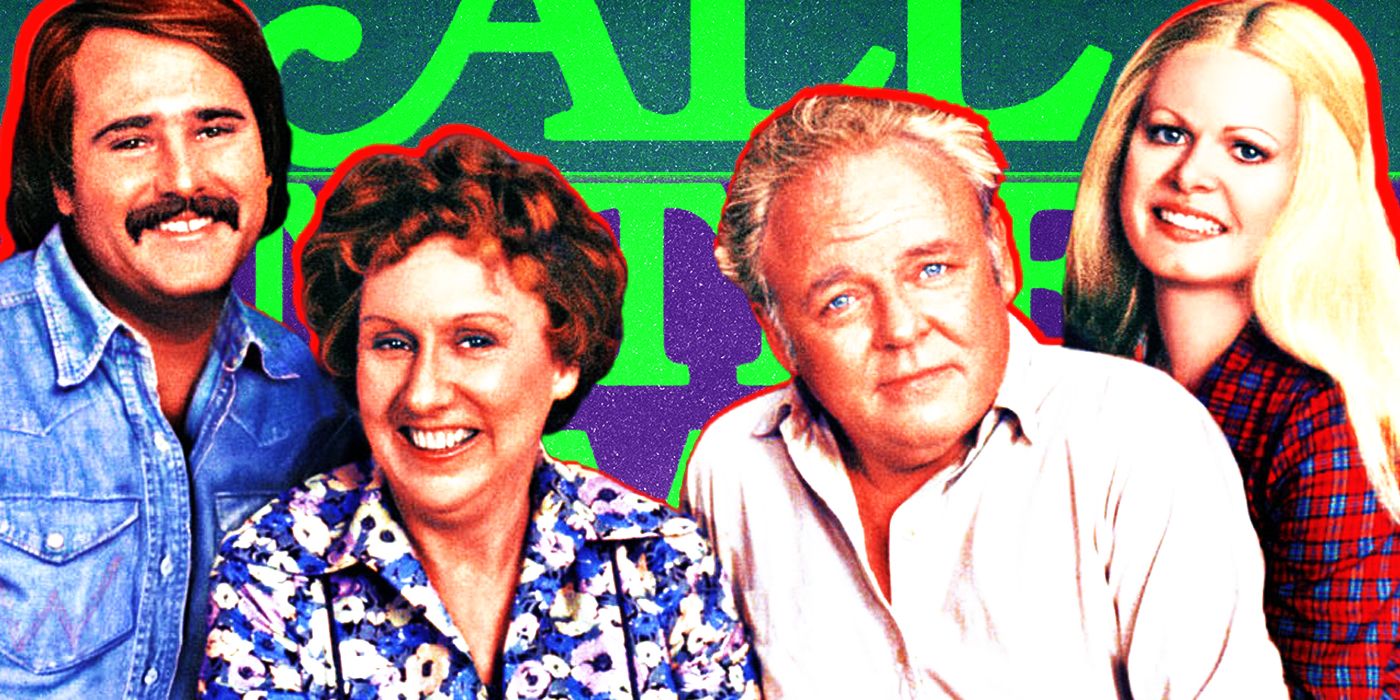
When All in the Family first premiered in 1971, it shocked viewers, challenged social norms, and transformed television. Archie Bunker, the lovable but bigoted patriarch of the Bunker family, became a cultural icon. However, what many people don’t realize is that All in the Family’s massive success was almost cut short—not because of ratings or audience disapproval, but due to government intervention. Yes, the very government that was grappling with issues of race, politics, and civil rights played a direct role in forcing the show to change its time slot. But why did the government get involved, and how did it affect the show’s legacy? Let’s dig into this fascinating piece of television history.
The Rise of All in the Family and Its Bold Approach
All in the Family was groundbreaking for many reasons. It was a sitcom that addressed issues like racism, sexism, war, and class in ways that were never before seen on television. The show’s central character, Archie Bunker, voiced the prejudices and bigotry that existed in a segment of the American public, particularly among working-class, middle-aged white men.
What made the show unique was not just its content, but how it made uncomfortable topics approachable through humor and satire. It didn’t shy away from serious social issues, including race relations, gender roles, and the changing cultural landscape of the 1970s. And this boldness, especially in its portrayal of Archie’s offensive viewpoints, made the show both revolutionary and controversial.
But its success wasn’t just about the show’s boldness—it was also about timing. Airing on CBS during a period of social upheaval, All in the Family was at the heart of the conversation about America’s changing identity. Yet, despite its popularity, the show’s direct confrontations with sensitive topics did not sit well with everyone.
Government Pressure and the Family Hour Dilemma
In the early 1970s, the American government and the Federal Communications Commission (FCC) took a keen interest in the content being aired on television. The rapid expansion of mass media was coming at a time when the country was also dealing with volatile issues like civil rights protests, the Vietnam War, and rapidly changing cultural dynamics. The government, particularly conservative factions, wanted to ensure that family-friendly content remained at the forefront of primetime TV.
In this context, All in the Family’s depiction of racism, sexism, and vulgarity, though satirical, was seen by some as too controversial for the time. While the show was a ratings success, not everyone was comfortable with its portrayal of sensitive issues. In particular, the show’s airing during the “family hour”—the primetime slot when the entire family was expected to watch television together—became problematic for conservative watchdogs.
1. The Family Hour: A Cultural Expectation
In the 1970s, the concept of the “family hour” was a cultural norm. Networks and advertisers often scheduled shows with content deemed appropriate for a general audience—especially for children. The idea was to ensure that television programming during these early evening hours would be suitable for all viewers, regardless of age.
All in the Family, however, was anything but conventional. Archie Bunker’s often bigoted remarks and the show’s frequent exploration of controversial issues made it a bit too edgy for some viewers—particularly those who held traditional views on what was appropriate for family viewing.
The FCC and conservative advocacy groups began pushing back against television shows that strayed too far from these norms, arguing that All in the Family’s content was unsuitable for a broad audience.
2. Government Complaints and Public Pressure
In the early years of the show, public pressure mounted for television networks to censor content that could be deemed offensive or inappropriate for young viewers. Several prominent public figures, including political conservatives, spoke out against the content of All in the Family, arguing that it was harmful to American values. This was part of a broader cultural clash between the more conservative establishment and the rising counterculture of the 1960s and 1970s.
The government’s role wasn’t just limited to public outcry. The FCC was also involved in regulating broadcast standards, with a particular focus on how programs affected the moral fabric of society. Complaints about All in the Family‘s language, sexual content, and racial stereotypes prompted the government to consider taking action, particularly in terms of the show’s placement in the family hour.
The Time Slot Shift: A Response to Government and Public Pressure
In response to the growing complaints and government influence, CBS made the decision to move All in the Family from its original 8:00 PM time slot to a later, more adult-oriented slot. This change was an effort to placate those who felt the show’s content was too risqué for primetime television. The shift, while still keeping the show in a prime-time slot, allowed the show to retain its edge without risking further controversy.
This decision was largely motivated by the desire to balance public responsibility with commercial success. While CBS was not going to cancel the show due to its popularity, the network had to adjust its strategy to ensure that it wouldn’t alienate advertisers or face increased scrutiny from government regulators.
3. The Impact of the Shift on All in the Family‘s Legacy
Interestingly, the shift in time slots didn’t negatively affect All in the Family’s viewership or cultural impact. In fact, the show continued to thrive, becoming even more entrenched as a critical piece of television history. However, the move highlighted the tension between artistic freedom and government regulation. The fact that a government body had enough influence to push for the re-scheduling of a television show based on content deemed offensive to certain groups illustrated just how much control the government held over media at the time.
Furthermore, the time slot change underscored the larger societal debates of the era. While the government was trying to protect traditional family values, the content of All in the Family was often reflecting the tensions and struggles that many families faced—making the government’s attempt to regulate television content feel at odds with the changing nature of American society.
Why This Matter in the Context of TV’s Evolution
The intervention in All in the Family’s programming time speaks volumes about the history of television and the cultural battles of the 20th century. On one hand, the government’s influence reflected a desire to maintain control over the moral standards of broadcast media. On the other hand, All in the Family demonstrated the power of television as a cultural force capable of addressing complex issues that were often avoided in mainstream discourse.
The time slot shift also set a precedent for the ongoing battles over content regulation in television. From debates over the portrayal of violence and profanity to the representation of diverse communities, All in the Family became a symbol of how media, government, and societal expectations constantly intersect.
What We Can Learn from This Today
1. The Intersection of Government and Media
The incident of All in the Family’s time slot change serves as a reminder of how closely government regulations can be tied to media content. While the show’s success continued despite the shift, the episode serves as a symbol of how cultural and political forces often shape entertainment. Today, there is still tension between artistic expression and governmental influence, especially with the rise of digital platforms and streaming services that challenge traditional broadcast norms.
2. The Ongoing Debate About Censorship
All in the Family shows us that censorship, even when wrapped in the guise of family values, can be a double-edged sword. While content should be mindful of its audience, the line between protecting the public and stifling freedom of expression can often blur. The show’s move in time slots highlights the ongoing struggle for creators, regulators, and audiences to find common ground on what is acceptable.
3. The Importance of Pushing Boundaries in TV
In many ways, All in the Family was ahead of its time, pushing boundaries that we now take for granted. The show’s honest portrayal of bigotry, racism, and social issues paved the way for future programming that would continue to challenge cultural norms. The time slot shift, while a momentary setback, didn’t stop the show from continuing its critical work of pushing viewers to confront uncomfortable truths.
Conclusion: A Bold Legacy Despite Censorship
The government’s role in forcing All in the Family to change time slots is a fascinating and telling chapter in television history. It highlights the tension between societal norms, government regulation, and the evolving landscape of American culture. While the shift was initially a response to criticism and concerns over content, it didn’t diminish the show’s impact. Instead, it underscored the cultural significance of All in the Family, showing just how deeply media and politics can be intertwined. Today, we can look back at the show’s legacy not only as a piece of groundbreaking entertainment but also as a symbol of how media shapes, challenges, and reflects society.
